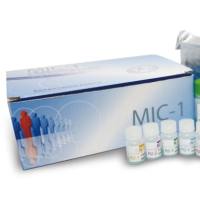Methods for Analysis of Prenatal Diagnosis
互联网
453
Prenatal diagnosis of β-thalassemia was first accomplished in 1974, and since then, many countries have developed an extremely successful program for controlling the disorder based on population screening and fetal diagnosis. Initially, this was performed by the measurement of globin chain synthesis in fetal blood, obtained by fetal blood sampling at 18–20 wk of gestation. However, DNA analysis techniques soon began to replace the globin chain synthesis approach, first by the indirect technique of restriction fragment length polymorphism (RFLP) analysis, followed by direct detection of mutations by restriction enzyme digestion and later by oligonucleotide hybridization to DNA fragments on a Southern blot. All of these DNA analysis methods by the Southern blot technique were complex and expensive, and prenatal diagnosis remained inaccessible for developing countries until the discovery of polymerase chain reaction (PCR), which led to the development of simpler, quicker, and less expensive nonradioactive methods of mutation detection (1 ).









